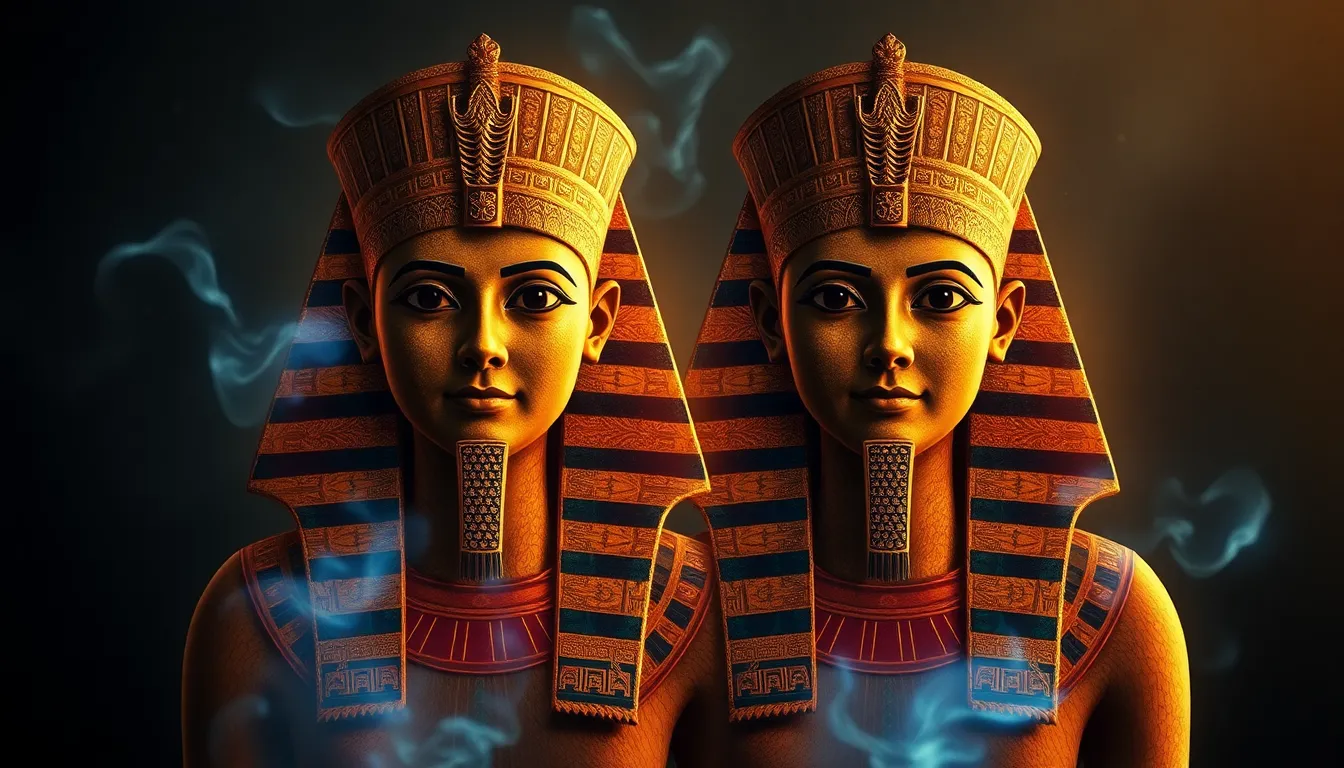The Myths of Pharaoh Hatshepsut’s Dual Identity
I. Introduction
Pharaoh Hatshepsut stands as one of the most significant figures in ancient Egyptian history. As one of the few female pharaohs, her reign marked a unique chapter in a civilization predominantly ruled by men. Hatshepsut’s story is not just one of power and leadership but also of identity, as she navigated the complexities of gender roles in her time.
The concept of dual identity reflects Hatshepsut’s unique position as both a woman and a pharaoh. This idea encompasses her blending of traditional male attributes with her own identity as a woman, leading to a complex legacy that continues to intrigue historians and scholars.
This article aims to debunk the myths surrounding Hatshepsut’s dual identity, presenting a clearer picture based on historical facts and archaeological evidence.
II. Historical Context of Hatshepsut’s Reign
Hatshepsut ruled Egypt from 1479 to 1458 BCE, during the Eighteenth Dynasty, a period known for its wealth, power, and monumental architecture. Her reign emerged during a politically tumultuous time, marked by the need for strong leadership following the death of her husband, Thutmose II.
Initially, Hatshepsut served as regent for her stepson, Thutmose III, who was still a child. However, she eventually declared herself pharaoh, effectively taking control of the throne.
III. The Gender Dynamics of Hatshepsut’s Identity
Gender roles in ancient Egypt were strictly defined, with men typically holding positions of power and authority. However, Hatshepsut’s reign challenged these norms:
- Portrayal as a Male Pharaoh: Hatshepsut adopted male regalia, including the false beard and traditional pharaonic attire, to solidify her authority.
- Implications of Dual Identity: By blending masculine and feminine traits, Hatshepsut navigated the gender dynamics of her time, securing her place in history.
IV. The Myth of Hatshepsut’s Masculinity
The myth of Hatshepsut’s masculinity stems from her adoption of male titles and regalia. This practice was not uncommon in ancient Egypt, where female rulers often needed to project strength and authority:
- Adoption of Male Regalia: Hatshepsut is depicted wearing a kilt, headdress, and false beard, symbolizing her role as pharaoh.
- Cultural Perceptions: In ancient Egypt, leadership was predominantly seen as a male domain, making Hatshepsut’s portrayal necessary for her acceptance as a ruler.
- Case Studies: Other historical female leaders, such as Cleopatra and Elizabeth I, also navigated gender expectations in their leadership.
V. Artistic Representations and Their Impact
Hatshepsut commissioned numerous monuments and temples during her reign, many of which showcased her dual identity:
- Monuments and Temples: The Temple of Deir el-Bahari is a prime example of her architectural achievements, blending grandeur with her unique identity.
- Artistic Depictions: Art from her reign often depicts her as a male figure, reinforcing her authority while simultaneously showcasing her femininity through other representations.
- Role of Art: Artistic representations played a crucial role in shaping the historical narrative of Hatshepsut, influencing how she was perceived both in her time and in later interpretations.
VI. The Legacy of Hatshepsut’s Dual Identity
Hatshepsut’s reign had lasting effects on subsequent female leaders and the perception of women in power:
- Influence on Future Leaders: Her successful rule paved the way for future female pharaohs and leaders, demonstrating that women could govern effectively.
- Historical Erasure: After her death, Hatshepsut’s legacy was largely erased, with her images defaced and her name omitted from historical records, reflecting the backlash against female authority.
- Modern Rediscovery: In recent years, historians have sought to reclaim Hatshepsut’s contributions, highlighting her achievements and the significance of her reign.
VII. Debunking Common Myths About Hatshepsut
Numerous myths surround Hatshepsut’s portrayal and identity:
- Myth vs. Fact: Contrary to the belief that she was merely a usurper, Hatshepsut was a legitimate ruler who skillfully maintained power and stability in Egypt.
- Impact of Myths: These myths have influenced modern interpretations of ancient Egyptian history, often overshadowing the realities of female leadership.
- Importance of Critical Analysis: Understanding Hatshepsut’s true identity requires a critical examination of historical records and artistic depictions.
VIII. Conclusion
In summary, Pharaoh Hatshepsut’s dual identity as both a woman and a pharaoh challenges traditional narratives of ancient Egyptian leadership. Her reign signifies a remarkable period of prosperity and innovation, defying the gender norms of her time.
The relevance of Hatshepsut’s identity extends beyond ancient history, prompting contemporary discussions on female leadership and representation. There is a growing need for further research and education on the contributions of women throughout history, ensuring that figures like Hatshepsut receive the recognition they deserve.




